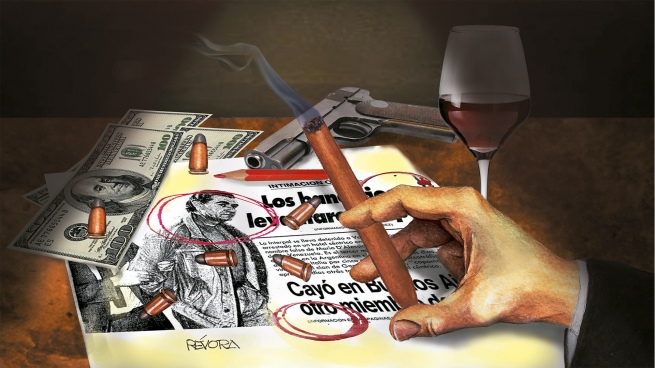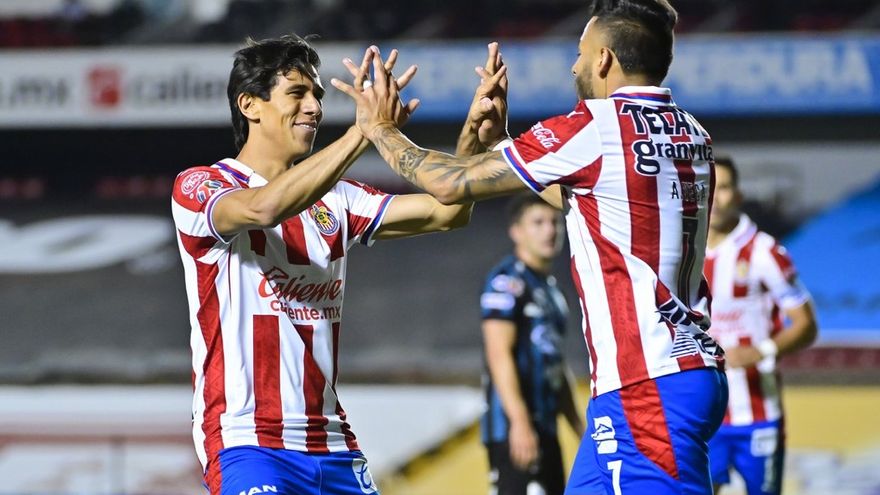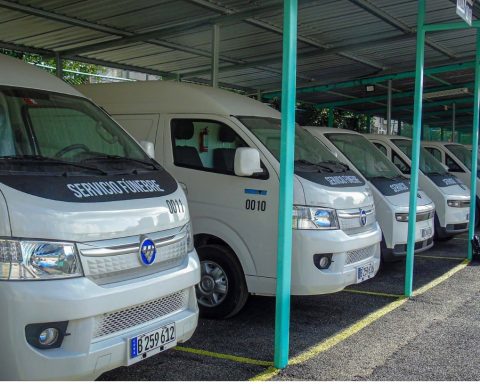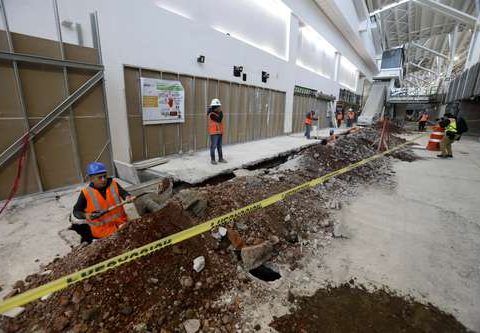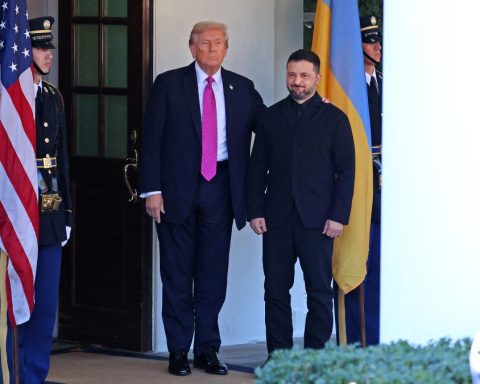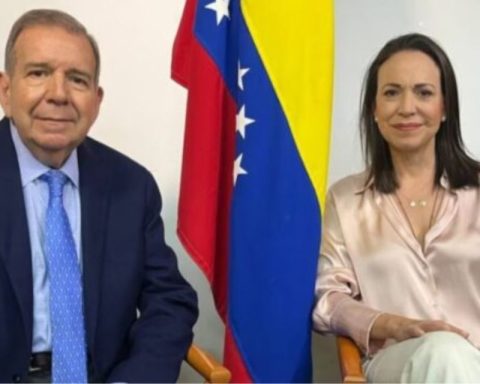The scoop reached the newspaper Sur by telephone during the hot afternoon of March 6, 1990.
– We hooked a hitman from the Italian mafia. Are you interested?
The call came from the local Interpol branch. Similar ones had been made to the newsrooms of Crónica and Clarín. Thirty minutes later, a guy in a suit with a shiny Versace design He received the journalists in the offices of that dependency in the downtown area. And she looked exultant; in addition to striving to be entrancer. In fact, with a mischievous smile, he identified himself only with the diminutive of his probable last name: “Gonzalito”. It was hard to believe that the man was a deputy commissioner of the Federal Police.
His next step was to guide the visitors into the Situation Room. There were other individuals in suits who also looked exultant. They all hovered around a tall, prematurely graying guy., who was lounging in an armchair. Despite the harshness of his gesture, he seemed to feel at ease with him; he conversed affably with the policemen and drank coffee with a certain indifference. After the last sip, he lit a cigarette that had just been offered to him. It was hard to believe that this man was the detainee.
partly because the sleeve of his jacket hid the handcuffs that attached his left wrist to the armrest of the seat. No less disconcerting was the joyful sparkle in her eyes when she noticed Gonzalito’s presence. This one, always with his smile, went diligently towards him to pat his shoulder, and say:
– Is everything okay, Don Vito?
Such was the nickname of Valeriano Forzatti, who also had another cute nickname: “Il capo di’l sparatori” (“The king of the trigger”).
On that occasion, one of the chroniclers managed to ask him:
-For what reason does the Italian justice system request your extradition?
His response was:
– Because I snatched an old woman’s wallet.
He pronounced that sentence in perfect Spanish. And he finished her off with a knowing wink. His captors celebrated his joke with a roar of laughter. And he, satisfied, went back to concentrating on the cigarette.
the lifer
This 38-year-old Sicilian He was considered one of the most effective and prolific killers of the Cosa Nostra. In this regard, in Italy he was credited with a hundred “contracts” fulfilled in a timely manner. Among these stands out the one that went down in history as “The Laguna Blue Massacre”. This was the name of a small cabaret located on the outskirts of the town of Mesola, in northeastern Italy, equidistant between Bologna and Venice.
During the early morning of February 2, 1989, Don Vito burst in there brandishing a Glock pistol to advance with firm steps towards a table located in the back of the place. Then all hell broke loose.
The first shot hit between a man’s eyebrows; he owned the placea small-time mobster who had kept a change. The second shot missed his son; a trail of blood and part of his brain mass landed on the face of a woman who seemed to be his girlfriend. She started to scream. But a third shot silenced her forever.
At that moment, someone at the bar managed to put a hand on his waist. It was an unsuccessful gesture: Forzatti, who had perceived this movement as if he had eyes in the back of his head, turned around to fire again. And, just in case, he also gunned down the guy behind the cash register. They both fell in unison. Then there was a thick silence. Until the assassin, by way of farewell, dedicated the following words to the terrified audience:
-You haven’t seen anything, are we? And never forget that today I have spared your life.
For this fact, a peninsular judge had issued against him an international arrest warrant. But everything indicates that the gunman remained in Italy until the following year, protected by his employers and by his great ability to cope with a clandestine existence. Although without remaining inactive, given the bloody war between mafia clans that at that time shook his already turbulent homeland.
So that his untimely arrival in Buenos Aires could only be interpreted as a work trip. However, the identity of his possible victim was still unknown.
Forzatti was arrested at the Hotel Esmeralda, a discreet three-star accommodation a few meters from the Obelisk, as stated in a brief statement from Interpol. Instead, the complex plot that led the police to his person was kept completely secret.
The gunman was profusely photographed the following morning, on the occasion of being taken to Judge Héctor Grieben’s office. Those images traveled the world. Then the figure of him fell into oblivion. However, what seemed to be the epilogue of a criminal saga would become the trigger for a tragedy marked by paranoia, error and death.

the scared
Lawyer Pedro Bianchi knew something about this story.
At 75 years old, that veteran criminal was beyond good and evil. So much so that he retained some youthful customs, such as carrying an old Ballester Molina pistol, which he said he loved more than his own children. He also maintained a disturbing portfolio of clients, among whom stood out thugs, some repressors and even a Nazi war criminal.
In this context, it was not surprising that he has assumed the defense of Gaetano Fidanzati, a high-ranking Cosa Nostra dignitary captured in Buenos Aires on February 22, 1990.
He had arrived in Argentina in December 1987, thus dodging a life sentence handed down shortly before by a Roman court. But he had also left Europe with some unfinished business and a long list of enemies. However, through an efficient network of emissaries, he was able to smoothly handle the strings of his business in southern Italy, which revolved around diamond smuggling and heroin trafficking. The truth is that his stay in Buenos Aires was peaceful. Until one of his men detected the arrival of Don Vito in Buenos Aires.
In this regard, Bianchi would say a few years later:
“Poor Fidanzati then panicked.
In short, this one soon chewed the certainty that in the killer’s luggage there was a photo with his face and a bullet reserved for him. From that moment on, he embraced the strategy of despair. In other words, to save his skin, he negotiated his surrender with the Federal Police, also revealing the presence of the feared gunman in the country. So that between his arrest and that of Don Vito there were barely 12 days.
Fidanzati thought that his time in prison would be temporary. At least that was what old Bianchi had told him, who had advised him from the beginning on his dangerous move. The astute lawyer swore to him that in this way he could avoid his extradition to Italy, thus whitewashing his residence in Argentina.. And all for the modest sum of $200,000, which the mobster paid him in cash.
Fidanzati was extradited to Italy in December 1992.
Bianchi would explain that judicial setback with just four words:
-I dont know. Something went wrong.
The mafia boss ended up housed in a penitentiary in Rome. And great was his surprise when he found out that Don Vito had not really crossed the Atlantic to kill him, but rather Francesco Marianello, another Sicilian mobster who in turn lived in exile in Miramar. The tragicomic nature of such a mistake would bring it into disrepute in the harsh world of organized crime.
Forzatti, meanwhile, languished in Devoto jail. There took place the dramatic epilogue of this plot

the desperate
The situation of the killer in the Bermúdez street prison was not enviable. That his head had a price was an open secret. The publication in the press of his capture made all his enemies know where he was. Thus, he had been housed in a “refugee ward”, where he shared his days with all kinds of psychopaths, snitches and rapists.
Still threats came to him from the outside world. The worst was the progress of his extradition process. Don Vito knew that if it was successful, he would find himself in some Italian prison with certain death.
So much so that, with his hands in a prayer position, he implored Judge Grieben to stop the process. That happened in February 1993. But there was no case: his return trip to Rome was scheduled for April of that same year. Consequently, he appealed to an extreme resource: to fabricate an Argentine crime in order to abort his departure.
On the night of March 7, Don Vito ripped out a pipe from his cell sink to kill a guard. And he completed that step by hitting his victim’s head again and again. Perhaps then he had not imagined that said crime would activate the device of his own death. The deceased’s colleagues would take care of it.
Two nights later, after being snatched from his bunk by a handful of grey-uniformed figures, he was mercilessly beaten. Thus, he breathed his last a few hours later, as a result of internal bleeding. He had 18 fractures in the thorax and as many in the skull.
His death went unpunished.
But in a literal sense, Valeriano Forzatti had achieved his goal: he was never extradited to Italy.
